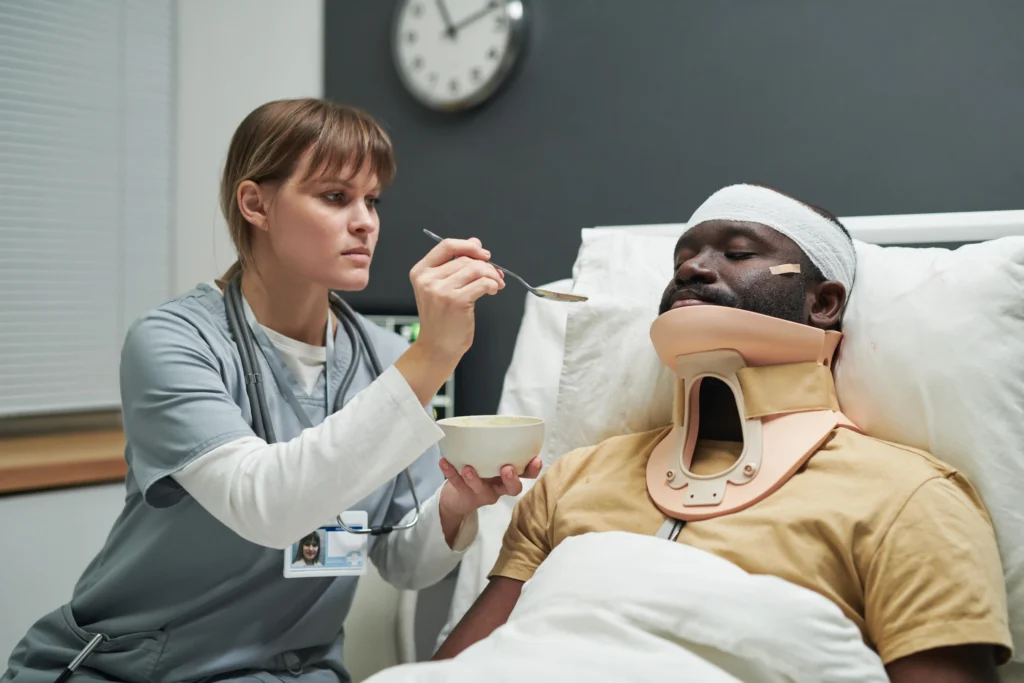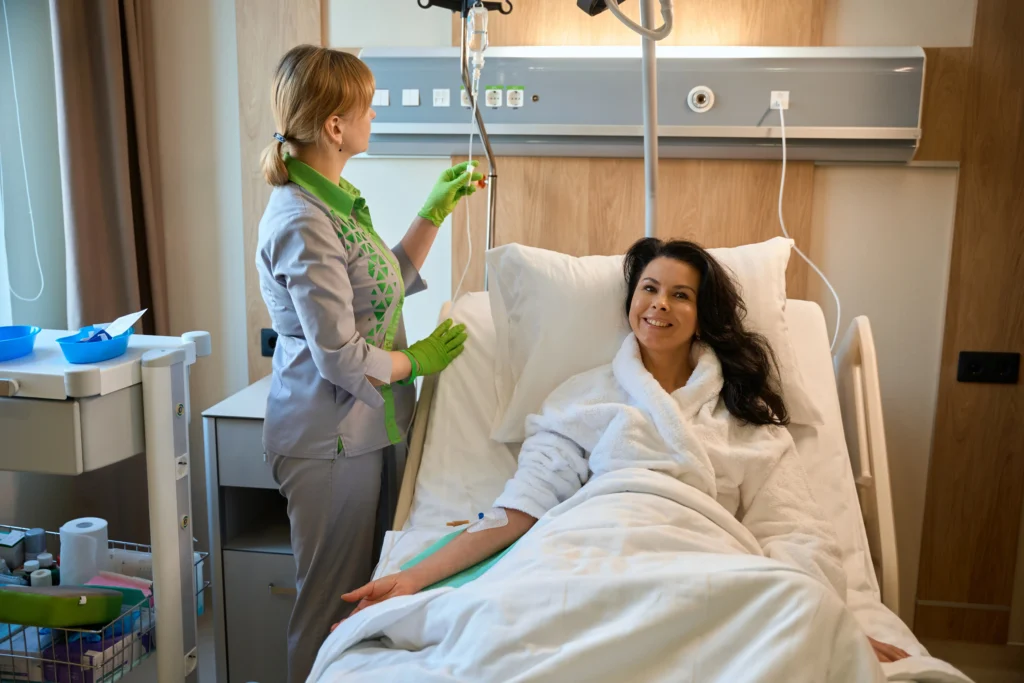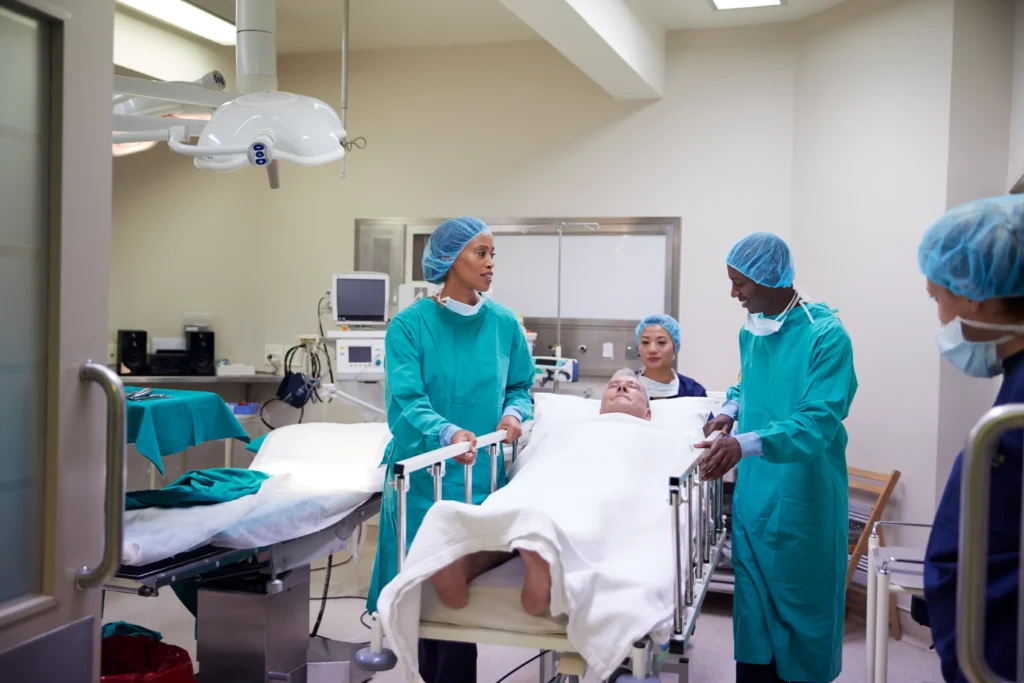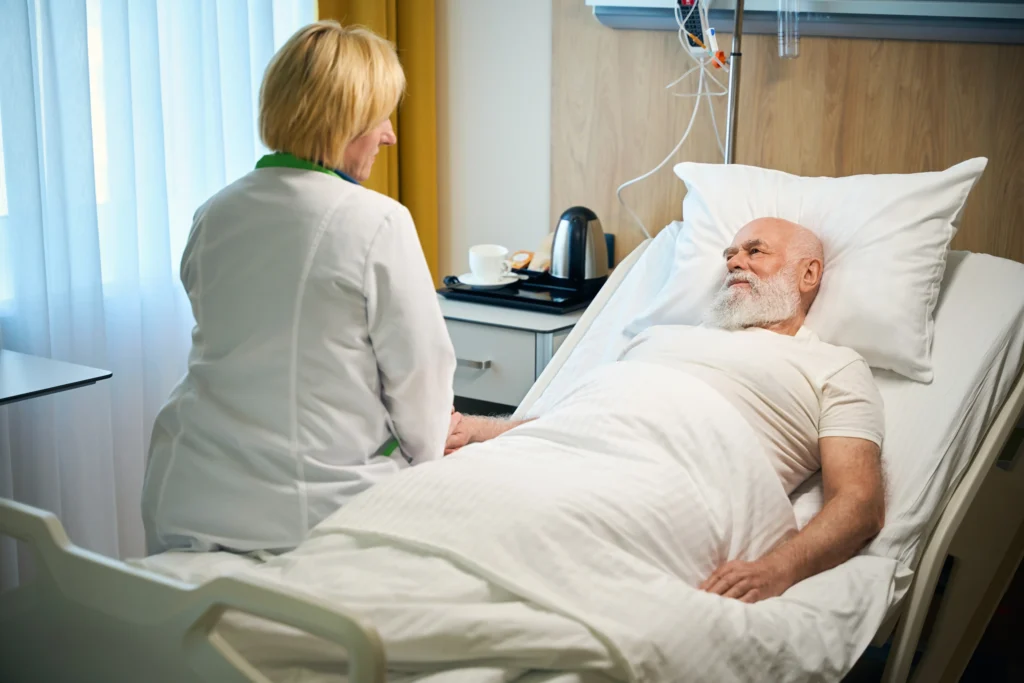
Table of Contents
TogglePost-operative relief refers to the combination of strategies and treatments designed to reduce pain and discomfort after surgery, helping patients transition back to their daily lives. It encompasses a multimodal approach—a blend of medications, therapies, and lifestyle adjustments—to address both physical and emotional aspects of recovery.
As a spine surgeon with over 25 years of experience, I’ve seen how effective post-operative relief plans can transform recovery, enabling patients to heal faster and with fewer complications. Managing post-operative relief is not just about pain reduction.
It’s about supporting your body’s natural healing process, preventing complications, and ensuring that you regain strength and mobility. Whether you’ve had a minor procedure or a complex spine surgery, achieving post-operative relief is critical to your recovery journey.

One of the most common questions my patients ask is why pain management and comfort are so emphasized post-surgery. The answer is simple: when pain is under control, your body can focus on healing.
For example, after a spine surgery, reducing pain allows you to start moving, improving circulation and preventing complications like blood clots or infections. Patients who manage their post-operative relief effectively often report better mobility and shorter hospital stays.
Additionally, they are less likely to develop chronic pain, which can result from unmanaged acute pain. Think of post-operative relief as a partnership between you and your care team, aiming to give your body the best chance to heal without unnecessary setbacks.
Recovery is not without its hurdles. One of the biggest challenges patients face is the variability of pain perception.
Pain is deeply personal, influenced by factors like previous experiences, comorbidities, and even emotional state. For instance, a patient with a history of anxiety might find their pain amplified, which can hinder recovery.
Another challenge is underreporting pain. Some patients worry about becoming dependent on medications or feel they’re being “difficult” by expressing discomfort.
However, failing to address pain can slow your recovery and increase your risk of complications. Moreover, different surgeries present unique hurdles; spine surgery patients may experience nerve-related pain that requires specialized interventions.
Medication Management is often the first step in achieving post-operative relief. A balanced approach using a combination of opioids, NSAIDs, and acetaminophen can effectively manage pain while minimizing risks.
For instance, many of my patients benefit from patient-controlled analgesia (PCA) pumps, which allow them to administer small doses of pain medication as needed. This method provides relief without overmedication.
Alternative Therapies can supplement traditional pain management. Physical therapy plays a vital role in improving mobility and reducing stiffness.
Acupuncture and TENS (transcutaneous electrical nerve stimulation) have also shown promise in targeting pain pathways. These therapies often work best when combined with medication to address both the cause and sensation of pain.
Positioning and Movement are crucial for comfort and healing. Using ergonomic pillows or braces can reduce strain on surgical sites, while gentle, guided movements can prevent stiffness and improve circulation. I encourage patients to begin moving as soon as it’s safe—a simple walk can make a world of difference in recovery.
At-Home Tools like heating pads or ice packs are simple yet effective for managing swelling and localized pain. Guided relaxation techniques or meditation can also reduce stress, which in turn helps control pain levels. Read more here.

Proper rest is foundational to post-operative relief. Sleep allows your body to repair tissues and restore energy.
However, many patients find it challenging to sleep due to discomfort. Using supportive pillows and maintaining a consistent sleep schedule can make rest more effective.
Nutrition plays an equally vital role. Foods rich in protein, vitamins, and minerals—such as lean meats, leafy greens, and whole grains—support tissue repair and reduce inflammation.
Anti-inflammatory foods like turmeric and fatty fish can also help alleviate discomfort. Hydration is often overlooked but is critical for healing.
Water helps flush out toxins, maintain circulation, and prevent complications like constipation, which can result from certain pain medications. A simple rule is to aim for 8 to 10 glasses of water a day, adjusting for individual needs.
Recovery isn’t just physical; it’s emotional too. Many patients experience stress, anxiety, or even depression after surgery.
This emotional toll can intensify physical pain, creating a challenging cycle. Guided imagery and mindfulness exercises can be powerful tools to break this cycle.
In my practice, I’ve seen patients benefit significantly from maintaining a positive outlook and engaging with support systems. Talking to loved ones, joining recovery groups, or even journaling can provide emotional relief.
For those with more severe anxiety or depression, seeking professional help is a proactive step that can make a big difference.
Wound care is often a point of concern for patients, but following best practices can prevent complications and promote healing. Cleaning your wound as instructed by your surgeon is crucial.
Avoid overhandling the area, and ensure dressings are changed as needed. Recognizing early signs of infection—such as redness, swelling, or unusual discharge—is essential.
If you notice any of these signs, contact your healthcare provider immediately. Additionally, keeping the wound dry and protected can help minimize risks.
Using appropriate wound care products and adhering to your surgeon’s guidelines ensures the area heals efficiently. Read more here.

Knowing when to reach out to your surgeon is an important part of recovery. Persistent or worsening pain, signs of infection, or difficulty performing daily tasks are all red flags.
If you’re ever in doubt, it’s better to ask than to wait. As a spine surgeon, I emphasize to my patients that their recovery is a partnership.
Open communication ensures that potential complications are addressed early, paving the way for a smoother recovery. Always trust your instincts—if something feels off, let your care team know.
Simple tools can make a big difference in recovery. Ergonomic cushions and pillows provide support and reduce strain.
Compression garments help with swelling and circulation, particularly after spine surgeries. Walkers or crutches can aid mobility without putting undue stress on healing areas.
At-home therapy devices, like heating pads or massagers, can alleviate pain and stiffness. Monitoring devices, such as blood pressure cuffs, allow patients to keep track of their health from the comfort of home.
Caregivers play an invaluable role in post-operative relief. From assisting with mobility and daily tasks to offering emotional support, their presence can make recovery smoother.
Caregivers can also help monitor for complications, ensuring timely communication with healthcare providers. I always encourage my patients to involve their caregivers in discussions about post-operative care.
This collaboration ensures everyone is on the same page and can work together to support the patient’s recovery. A well-informed caregiver can be a cornerstone of successful healing.
Post-operative relief is about more than just managing pain; it’s about empowering patients to heal in comfort, with the support of a dedicated care team. From medications to alternative therapies, rest, nutrition, and caregiver involvement, each element plays a vital role in recovery.
With over 25 years of experience, I’ve seen firsthand how a comprehensive, patient-centered approach can transform the healing process. Trust your care team, communicate openly, and take proactive steps to support your recovery. You’ve got this.
GET IN TOUCH +
285 Sills Road
Building 5-6, Suite E
East Patchogue, NY 11772
(631) 475-5511
184 N. Belle Mead Road
East Setauket, NY 11733
(631) 675-6226
GET IN TOUCH +
285 Sills Road
Building 5-6, Suite E
East Patchogue, NY 11772
(631) 475-5511
184 N. Belle Mead Road
East Setauket, NY 11733
(631) 675-6226
SUBSCRIBE TO OUR NEWSLETTER +
Send us a Google review. Click this link and let us know how we did!
Review us on Yelp too.